

Are You Really “Overreacting”?
People react to different amounts of sensory input, but even when it’s only a little, it’s not made up.

A lot of us who are neurodivergent don’t have a clear sense of what we want or need, because we’ve been trained for years to ignore our internal signals to survive
And while everyone is negatively affected by these systems, our more diverse neurological expressions create a more intense backlash.
Being able to push through is useful in dealing with unpleasant environments that we don’t have any control over, but it’s not useful in dealing with areas of life in which we do have some ability to regulate ourselves and what is going on around us. Our own homes, bedrooms, personal care routines, products we purchase, etc.
Gradually developing that internal awareness helps us reconnect meaning between things that happen and how they affect us. Like how it feels when
Which is why I made Sensory Moments. To help with this process of integrating your internal awareness, slowly and gently. (Fast and furious doesn’t work, and trying it generally triggers trauma.)
Simply noticing what’s going on in the moment, in one part of your body, is really all that’s needed to develop your internal awareness. It’s genuinely not any more complicated than that. It simply takes attention, over time.

You can do this on your own without paying anyone anything, but if a little reminder is helpful, or if getting examples of the kinds of questions to ask is useful, Sensory Moments can help.
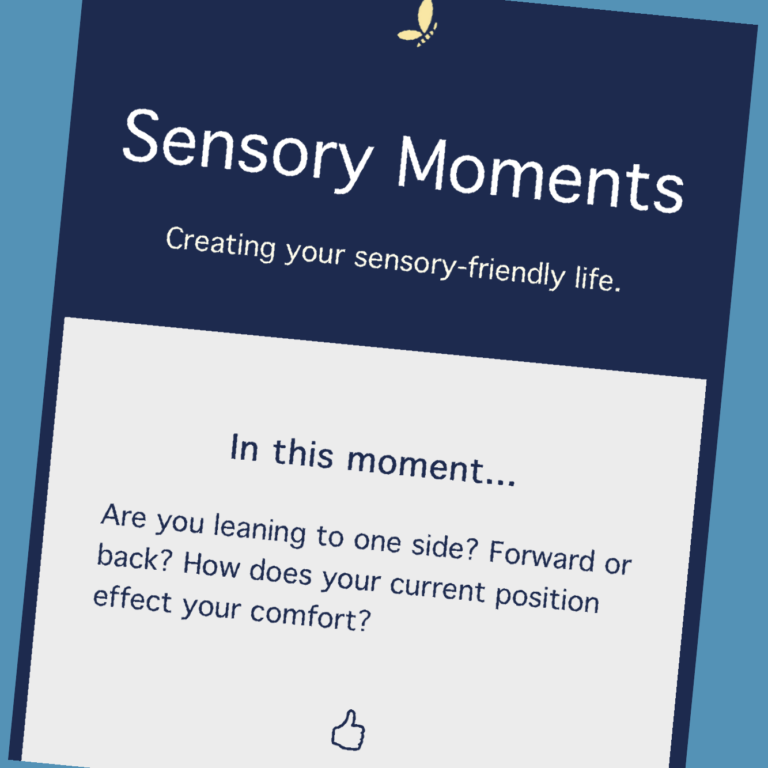
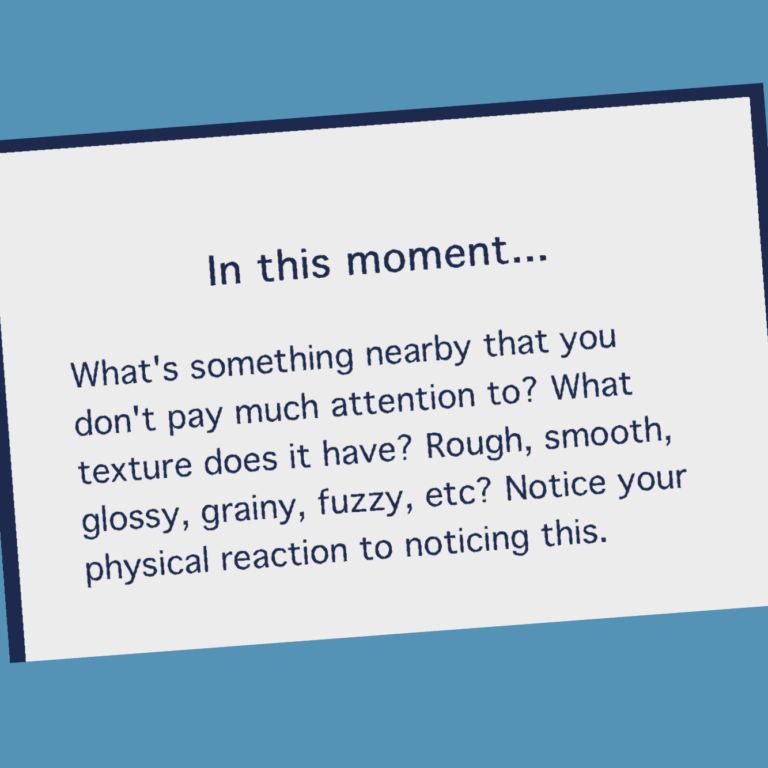
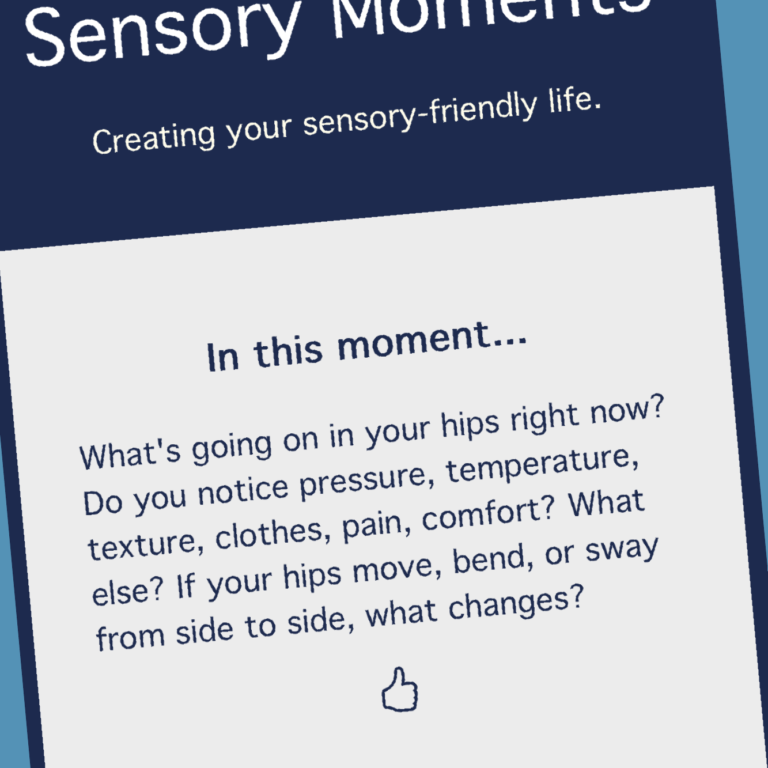
You’ll get a short, daily email prompt to tune into your in-the-moment sensory experience.
It’s designed to take seconds, literally.
There’s no exercises. No getting up and doing something. No goals, “shoulds,” or comparisons. Easy to modify to your unique circumstances.
It’s simply about noticing what’s going on in one part of your body, or around you, in this very moment.
Gradually, over time, this noticing can subtly increase your own internal awareness at other times as well.
The whole sequence is an email-a-day for three months (though you can opt-out anytime).
Making the small tweaks and big changes that are needed to improve the quality of your sensory experience is most effective when you have a good sense of what’s going on inside you.
Getting better at not pushing past your limits involves knowing when you’re reaching your limits, which involves growing your internal awareness.
If you’re exploring ways to be present in the moment, this is an easy reminder to notice the now.
As you follow the prompts, or modify them to suit your needs, you’re checking in with a variety of sensory experiences that we tend to ignore on a daily basis. That our culture teaches us to ignore.
Gradually, over time, this noticing can subtly increase your own internal awareness at other times as well.
You might notice that you’re more aware of things like:
This is a great supplement to go along with other things you’re already doing on your journey of figuring yourself out and improving your life.
I could easily compile the list of questions into a PDF or some other format and you could get them all at once.
And yes, email inboxes can get cluttered.
So why email?
Basically, there’s one very important reason.
It’s a slow format delivery. All this internal awareness stuff needs time to repattern neural pathways so it’s not overwhelming and has the positive benefits intended.
If you got the whole set at once, would you really look at only one at a time, once a day? Or would you look through a bunch at first, set it aside, and not come back again?
Yeah, me too. I’d have great intentions, but…executive functioning…so…
The benefit to email is that you get a tiny bit at a time over a longer span of time. And that’s what allows the rest to work and give you the benefit.
(If you know another way to accomplish that, outside of email, I’m open to ideas!) In the meantime…email it is.
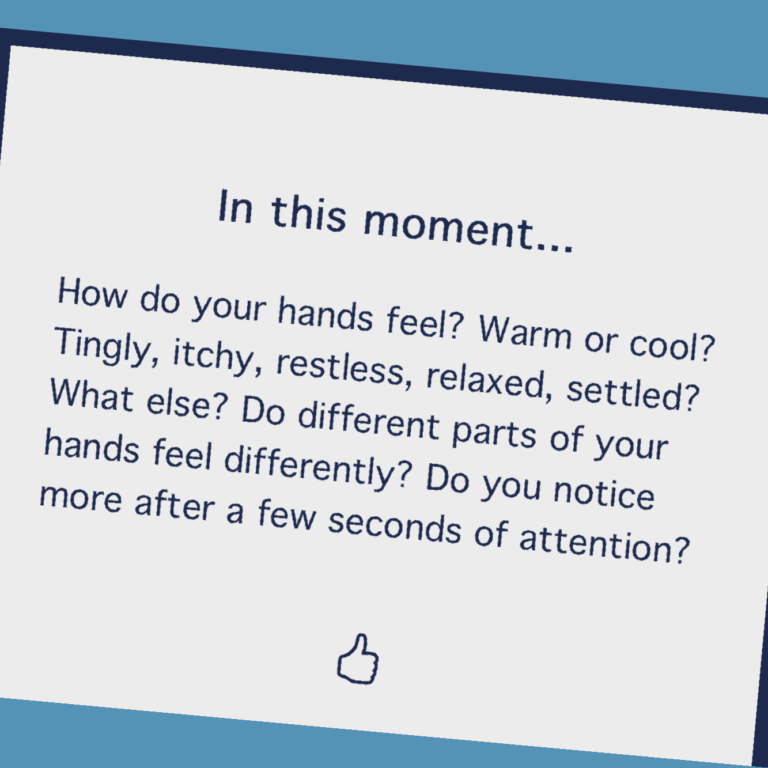

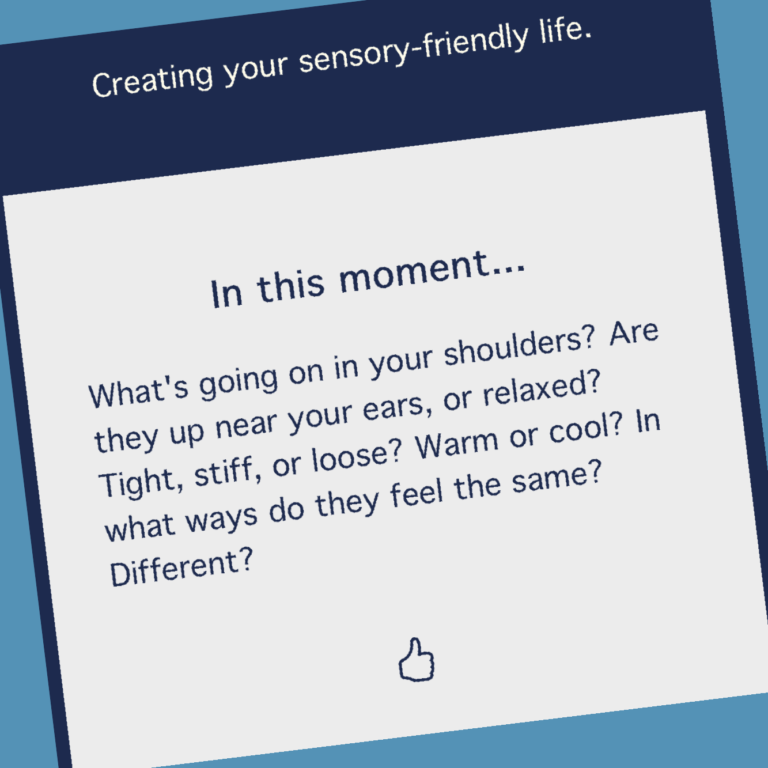

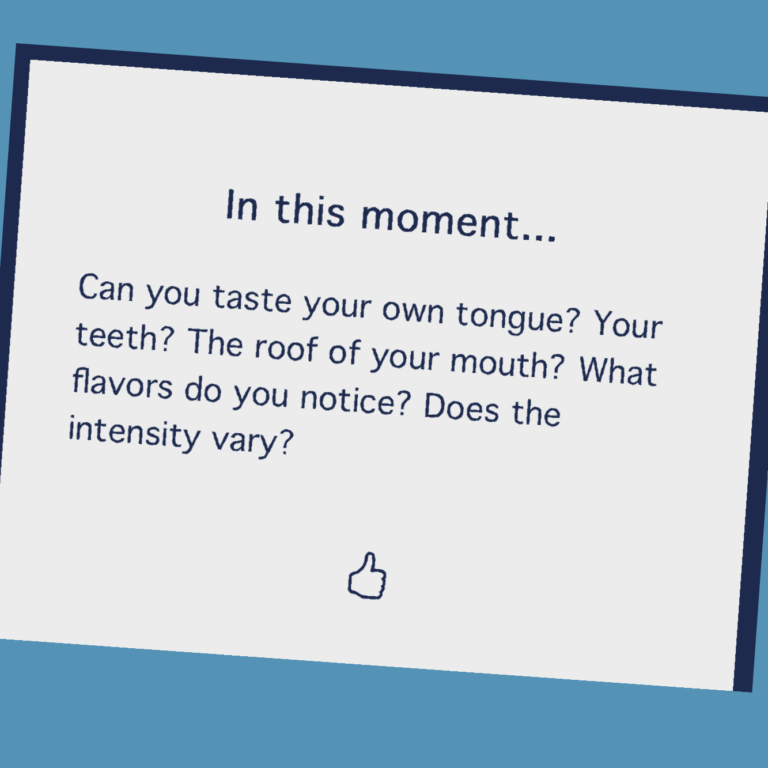


If body stuff is trauma-triggering for you. This is designed to be trauma sensitive, but it is directly addressing body stuff and if you’re not in a place where you can process that right now, even in a gentle way, this isn’t the right time.
The prompts are designed to be:
Because I deal with all of those myself.







That’s the best part.
You get to choose, from $15+.
For a reference point, if I were to put a firm price-tag on this, I’d ask $30 for the full sequence of three months. But that doesn’t work for everyone. Hence, I’m offering this as Pay What You Can.


People react to different amounts of sensory input, but even when it’s only a little, it’s not made up.


Spectrum identification was absolutely, hands down, no holds barred, the best thing that has happened in my life.


You’ve heard of autistic masking? Here’s an intro on what it is, what it’s not, and some of the side effects.
We don’t spam or sell. Promise. Unsubscribe at any time.
Read our privacy policy here.
Privacy Policy Heather’s Boundaries (T&C)
The information on this site is not intended or implied to be a substitute for psychotherapy, medical advice, diagnosis, or treatment.
© 2020-2024 Autism Chrysalis LLC.